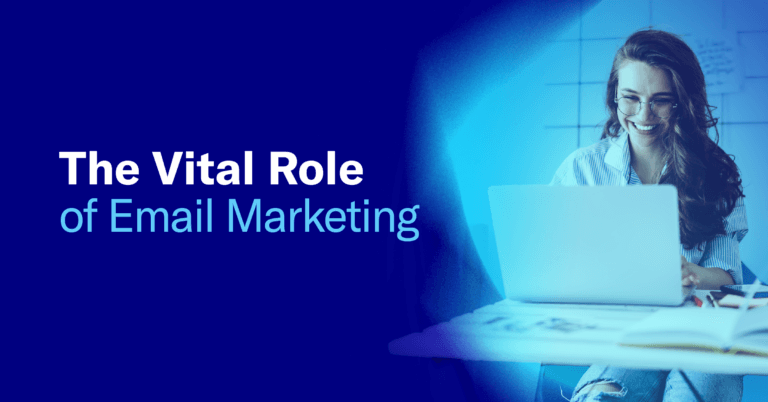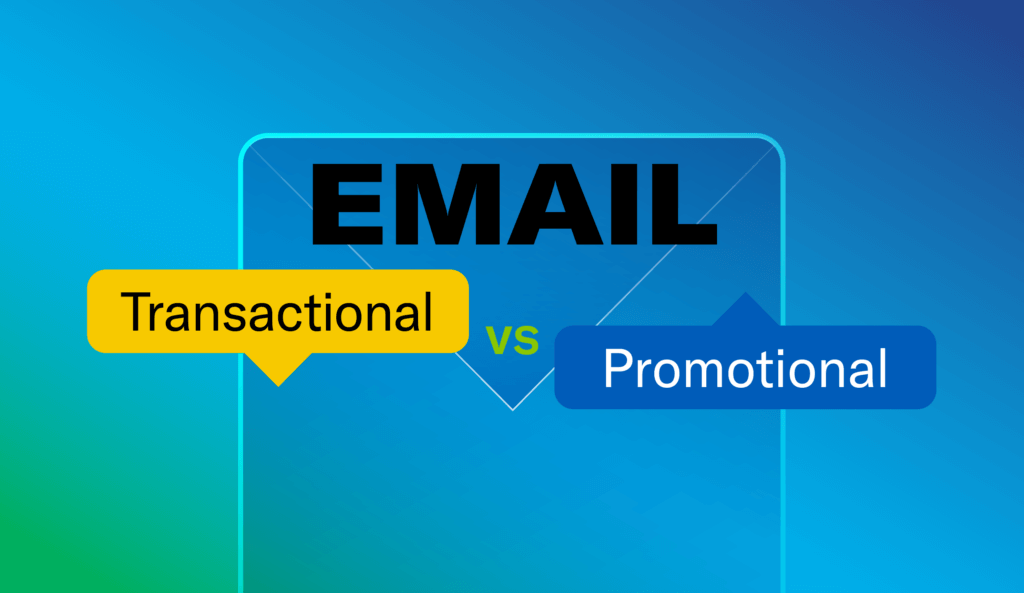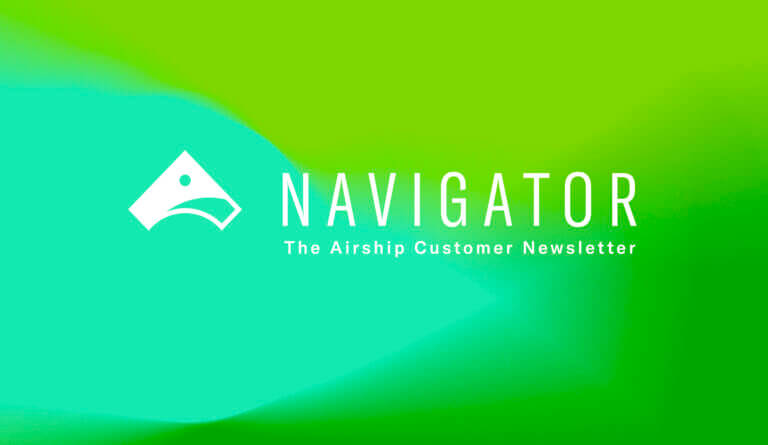
Transactional Email vs. Promotional Email: What to Know to Make Every Message Count

Abbie Baxter Content Marketing Manager, Airship

Share to my network
In this article
Categories
Book a meeting
Connect with our team of experts to discuss your conversion and loyalty goals, and how we can help you achieve them faster.
Get a demoEmail reigns supreme as consumers’ preferred line of communication with brands, offering a direct line to send rich, valuable information at scale. However, with inboxes overflowing and attention spans shrinking, cutting through the inbox noise is more challenging than ever. Airship research shows that a staggering 79% of the consumers ignore or delete marketing emails from brands they’ve subscribed to half the time or more.
To stand out, brands must understand the nuances of different email types and adopt a strategic approach prioritizing personalization, relevance and value, especially as email deliverability standards evolve. Here we explain differences between transactional vs. promotional emails — the two most common message types in an email marketing strategy — and share best practices for delivering inbox value, ensuring every message supports your campaign goals.
What Is a Transactional Email?
A transactional email is typically triggered when an individual completes a specific action on your website or mobile app, such as registering a new account, requesting a password reset or making a purchase. These emails deliver essential, practical information based on the customer’s unique request, fostering trust and ensuring a seamless customer experience.
However, they also offer brands an opportunity to encourage customers to take the next best action. For example, a retailer could send a transactional email following a one-time purchase encouraging the shopper to download the app, set up an account and enroll in their loyalty program for exclusive rewards and early access to future sales.
Examples of Transactional Emails
Order Confirmations
Just as customers expect a printed receipt at the register, they also expect the same after completing an online purchase. Order confirmation emails provide peace of mind, allowing customers to view transaction details and keep an electronic record for future reference.
Your order confirmation emails should include:
- The order confirmation number
- Details of the transaction (items sold, total amount, billing and shipping details)
- Links to track order status
- Easy access to return or cancellation policies
- Your business contact information
Shipping Updates
Once an order is en route, customers expect a delivery time estimate. Keep your customers informed and reduce uncertainty by sending timely shipping updates with the following:
- The shipping provider’s name (Ex: FedEx, Amazon, USPS)
- The delivery address
- Estimated arrival time with real-time tracking, if available
- Customer support information in the case of a delay
Account Verification
Account verification is vital when onboarding mobile app and web customers to unify interactions across different channels and destinations. It also helps to protect your customer’s data and lower fraud risk. These emails should include:
- A verification link, SMS code or push notification for easy confirmation
- Clear instructions on how to verify the account
- An expiration time for the link or code
Password Resets
Forgotten passwords are a common frustration. Help customers quickly regain account access with automated password reset emails. Include:
- A secure reset link to recover the customer’s password
- A time-sensitive expiration to prevent unauthorized access
- Tips for creating a strong password
What Is a Promotional Email?
A promotional email aims to capture attention and persuade customers to take an action — most often to purchase a product or service. Unlike transactional emails, promotional emails focus on driving conversions through engaging content and compelling offers that incentivize customers to use or continue using your product or service. These emails require compelling copy and imagery, along with a strong CTA, to influence action.
For promotional emails, it’s important to gain customers explicit preferences for content and frequency to avoid message fatigue. After all, unsubscribes and spam filtering can have a negative impact on your deliverability. Consider implementing a Preference Center to understand when, why and how often customers want to see you in their inbox.
Examples of Promotional Emails
Sales and Discounts
Drive engagement and conversions with limited-time offers, flash sales or sitewide discounts.
Product Launches
Generate excitement for a new product with a launch email highlighting key features and benefits.
Seasonal Campaigns
Leverage holidays and seasonal trends for relevant and engaging promotions.
Re-engagement Emails
Win back inactive customers with personalized, exclusive offers designed to encourage action and engagement.
Abandoned Cart
Recover lost sales by sending automated emails to customers who left items in their shopping carts reminding them of the items left behind, a seamless way to return to the purchase and incentives to complete the purchase.
Referral Emails
Encourage customers to refer your brand to their friends and family. Include:
- A clear explanation of the referral program and its benefits
- A unique referral link or code
- Incentives for both the referrer and the referred
- Social sharing buttons
Best Practices for Sending Transactional and Promotional Emails to Boost Open Rates & Conversions
Strategic use of both transactional emails and promotional emails can enhance customer loyalty and drive conversions. Here are a few best practices to consider:
Send Your Emails Separately
Transactional emails are time-sensitive and should always be sent separately from promotional emails to avoid getting lost in the shuffle.
Promotional emails should be delivered based on strategic marketing goals, customer behaviors and engagement patterns. Schedule them to align with key campaigns, product launches or seasonal trends to maximize impact.
Leverage Email Personalization & Segmentation
Email personalization should go well beyond a first name in the subject line. Transactional emails are personalized by nature, but there is also an opportunity to incorporate more tailored content or recommendations. For promotional emails, collect first-party and zero-party data to better define your audience segments and deliver highly targeted offers.
Consumers are more open than ever to sharing their interests, intentions, opinions in exchange for personalized experiences from the brands they love. Incentivize customers to share more data with quizzes, surveys or even gamification while providing value. Then tailor content based on past purchases, browsing behaviors and stated preferences, and optimize send times by previous engagement patterns to show up when your offer will resonate most.
Consider leveraging real-time data to tailor content when customers will be most receptive to it. Contextual awareness — location, device type, time of day, current browsing behavior and even weather — paves the way for hyperrelevant email content and offers.
Embrace a Culture of Experimentation
Test everything – subject lines, email layouts, call-to-action buttons and delivery times. For transactional emails, explore whether adding relevant product recommendations, personalized support links or next best actions improve engagement. For promotional emails, experiment with different discount offers, email lengths and visual elements to identify the winning combinations. Use the insights to continually refine your strategy and improve future campaigns.
Automate for Efficiency and Scale
Automated email marketing reduces manual investments, streamlines communication and ensures your emails reach customers when you intend them to. Transactional emails are ripe for automation, ensuring instant delivery of critical updates triggered by user actions.
You can extend automation to your promotional campaigns by creating triggered email series based on customer behaviors. For example, send onboarding emails for new web and app customers, abandoned cart reminders or re-engagement emails for inactive users. Automation ensures consistent communication and frees up your team to focus on strategic initiatives.
Track Performance
Track the effectiveness of your transactional and promotional emails by monitoring key metrics such as open rates, click-through rates, conversion rates and bounce rates.
Transactional emails will always see higher engagement because they are expected and often sought out by customers. Promotional emails, on the other hand, often require continuous optimizations to capture and retain customer attention. Monitor bounce rates and spam complaints, as these are indicators of deliverability issues and can have a negative impact on your email marketing strategy.
Transactional Email vs. Promotional Email FAQ
Still have questions about transactional vs. promotional email? Review the answers to frequently asked questions below.
When Should I Use a Transactional Email vs. Promotional Email?
Transactional emails are essential for delivering critical updates and information triggered by specific user actions. Use them for order confirmations, shipping updates, password resets and account verifications.Promotional emails are designed to drive engagement, generate leads and increase sales. Use them to announce new products, promote special offers, share valuable content and nurture customer relationships.
Can I Use Bulk Email Marketing Services to Send Transactional or Promotional Emails?
Bulk email marketing services are appropriate for sending promotional emails. However, they’re not ideal for transactional emails since these are specific to each individual. Consider using dedicated transactional email services for these messages to ensure reliability and compliance.
How Often Should I Send Promotional Emails?
The optimal frequency of promotional emails depends on your audience, industry and the type of content you are sending. Avoid overwhelming your subscribers with too many emails, which can lead to fatigue and unsubscribe rates. A/B test send times to determine the ideal cadence for your audience. Analyze engagement metrics to understand how different frequencies impact performance and adjust your strategy accordingly.
What Segmentation Strategies Can I Use to Enhance Email Marketing Performance?
Email segmentation means dividing your audience into smaller, more targeted groups based on relevant criteria. This allows for highly personalized messaging, boosting engagement and conversions. Common segmentation strategies include demographic data (i.e. age or location), purchase history, website behavior, engagement levels, stated preferences and lifecycle stage. For instance, you could send targeted promotions to frequent buyers or re-engage inactive subscribers with special offers.
With Behavioral Targeting, you can group customers into tiers based on their recency, frequency and monetary behaviors, and understand transitions between groups to refine segmentation. Incentivize at-risk customers to stick around, deliver preemptive campaigns to customers moving down the loyalty ladder and reward brand evangelists. Show up at just the right moment with the right offer to keep them engaged and move them toward long-term loyalty.
How Can I Integrate Transactional and Promotional Emails with Other Marketing Efforts?
Creating a cohesive customer experience requires aligning your email marketing strategy with other marketing channels. This means ensuring consistency across apps, web, SMS, push notifications and even mobile wallet. For transactional emails, integrate real-time updates from your app or website. For example, provide in-app order tracking that mirrors the information in your shipping update emails. Or send timely follow-ups via SMS. For promotional emails, use insights from other channels to personalize your email content. If a customer browses specific products on your website, send a targeted email with related offers. You can also use email to drive traffic to your app or website by highlighting exclusive content or features.
Build, Optimize and Send Transactional and Promotional Emails with Airship
Strategic use of transactional and promotional email, combined with data-driven personalization, rigorous testing and seamless automation, can strengthen engagement, boost conversions and advance customers through the lifecycle.
Book a meeting to learn how Airship can help you optimize your email marketing strategy and create personalized journeys that guide customers to value.

